 |
 |
 |
| |
HIV incidence drops in Melbourne MSM, reflecting changing HIV testing and control
|
| |
| |
22nd International AIDS Conference, Amsterdam, Netherlands, July 23-27, 2018
Mark Mascolini
HIV incidence--the new-infection rate--dropped steeply from 2012 through 2017 among Melbourne men who have sex with men (MSM) getting HIV care at 1 of 4 sexual health specialist clinics [1]. Falling HIV incidence coincided with declining times between HIV diagnosis and viral suppression, a finding suggesting the test-and-treat strategy can limit new HIV infections in some populations. The researchers believe the HIV care cascade metrics they used--HIV testing and viral suppression--offer a more sensitive way to evaluate the impact of HIV prevention programs.
Burnet Institute researchers who conducted this study noted that, throughout Australia, HIV prevalence stands at about 7.3% in MSM and 1.4% in people who inject drugs. Three quarters of new HIV diagnoses in Melbourne occurred in MSM in 2017. From 2012 through 2016, the proportion of HIV-positive people treated with antiretrovirals in Melbourne jumped from 82% to 95% and the viral suppression rate climbed from 88% to 94%.
The Burnet investigators proposed that patient-level data provide indicators of the HIV care cascade that are sensitive to change and so could prove useful in evaluating biomedical HIV prevention programs. They reasoned that by calculating (1) how many people with HIV are viremic and (2) how long they are viremic, they could define a key prevention metric: cumulative time people are viremic.
To test their ideas, the Burnet team explored data from a sentinel surveillance system that links a person's episodes of care via testing services, HIV care services, and labs. They aimed to collect data on two key variables--HIV diagnostic testing and viral load monitoring--from 2012 through 2017. Data came from 4 sexual health specialist clinics with high MSM caseloads. These clinics diagnose about 25% of all HIV cases throughout Victoria. From these data the researchers calculated 4 annualized trends: (1) rate of return HIV testing (an HIV test within 3, 6, and 12 months of a previous test), (2) proportion of positive HIV tests, (3) time to viral suppression (proportion with a viral load below 200 copies within 12 months of diagnosis, and median time to undetectable viral load), and (4) HIV incidence.
Proportions of MSM retested for HIV within 6 months climbed from 39.6% in 2015 to 47.5% in 2016 and to 52.0% in 2017. Over the same 3 years, the proportion of men retested within 3 months rose from 16.1% to 22.6% to 24.7%. Among MSM not using preexposure prophylaxis (PrEP), proportions retested for HIV within 3 and 6 months also rose from 2015 through 2017.
The proportion of HIV tests that came back positive rose from 1.6% in 2012 to 1.7% in 2013 and to 2.0% in 2014. Then the positive-test rate fell sharply to 1.4% in 2015, 0.8% in 2016, and 0.4% in 2017.
From 2012 through 2016, the proportion of HIV-positive MSM with an undetectable viral load within 12 months of HIV diagnosis rose steadily: 60.5% in 2012, 62.3% in 2013, 92.3% in 2014, 89.6% in 2015, and 95.6% in 2016. In the same 5 years, median days from diagnosis to a first undetectable viral load fell from 138.5 to 89, 98.5, 91.5, and 49. Annual HIV incidence fell steadily across those years: 0.95% in 2012, 0.87% in 2013, 0.86% in 2014, 0.44% to 2015, 0.38% in 2016, and 0.27% in 2017.
The Burnet researchers concluded that HIV incidence dropped substantially among MSM attending the four Melbourne HIV testing services--and that decline coincided with dwindling time between HIV diagnosis and viral suppression. They proposed that "data linked at the patient level generates cascade indicators that are more sensitive to change" and so may prove more useful in evaluating HIV prevention programs and informing strategic priorities.
Reference
1. Stoove M, Asselin J, El-Hayek C, et al. HIV prevention in a fast track city: trends in time-dependent HIV cascade indicators among gay and bisexual men attending high HIV caseload testing services in Melbourne. AIDS 2018: 22nd International AIDS Conference, Amsterdam, Netherlands, July 23-27, 2018. Abstract TUAC0105.
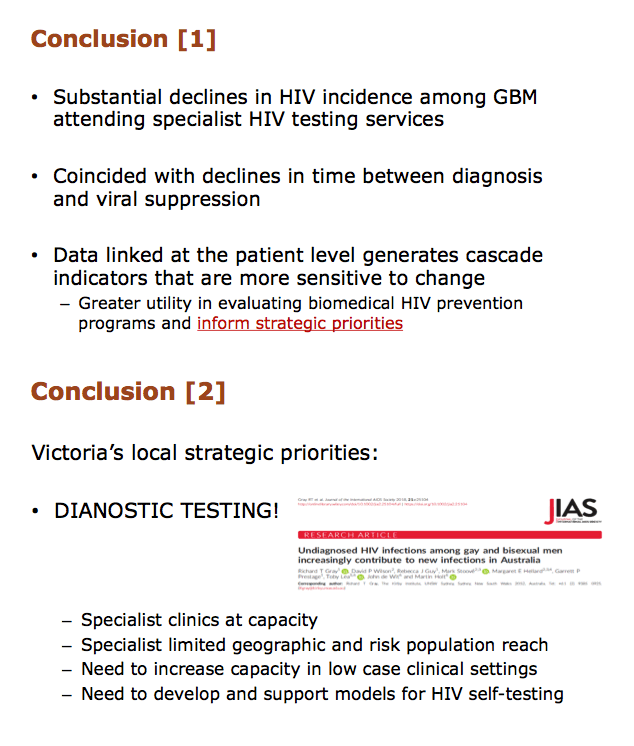
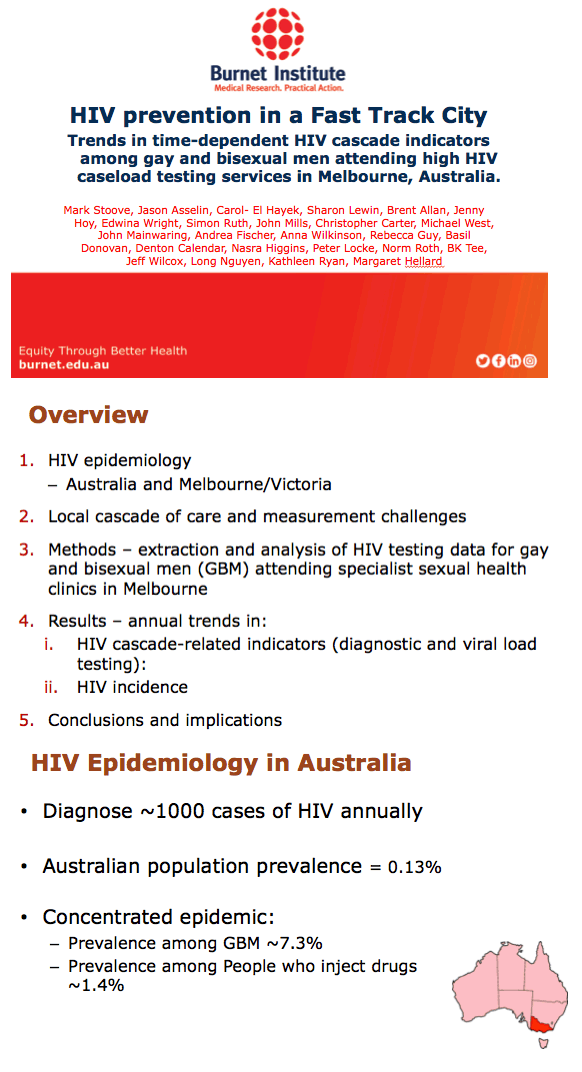
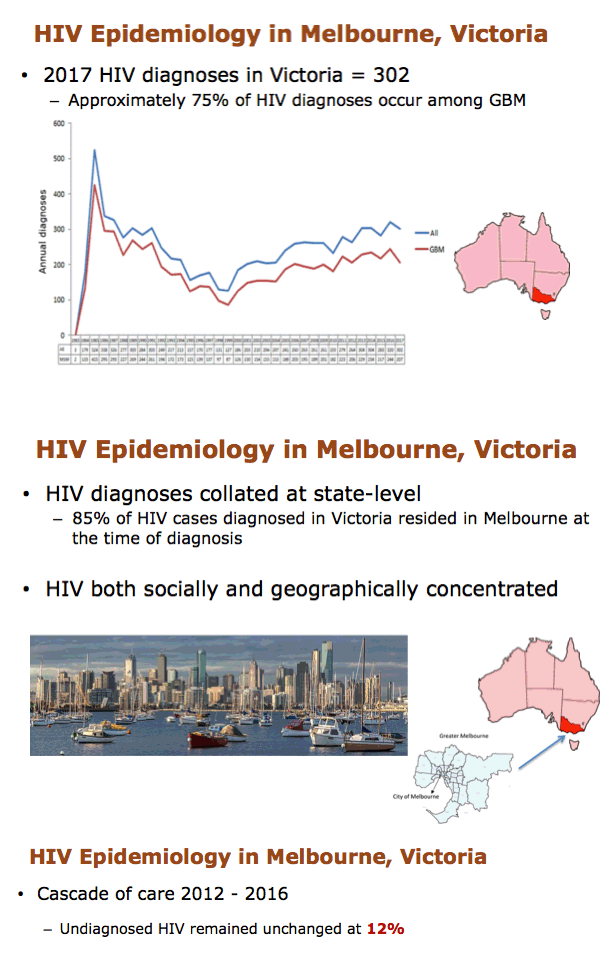
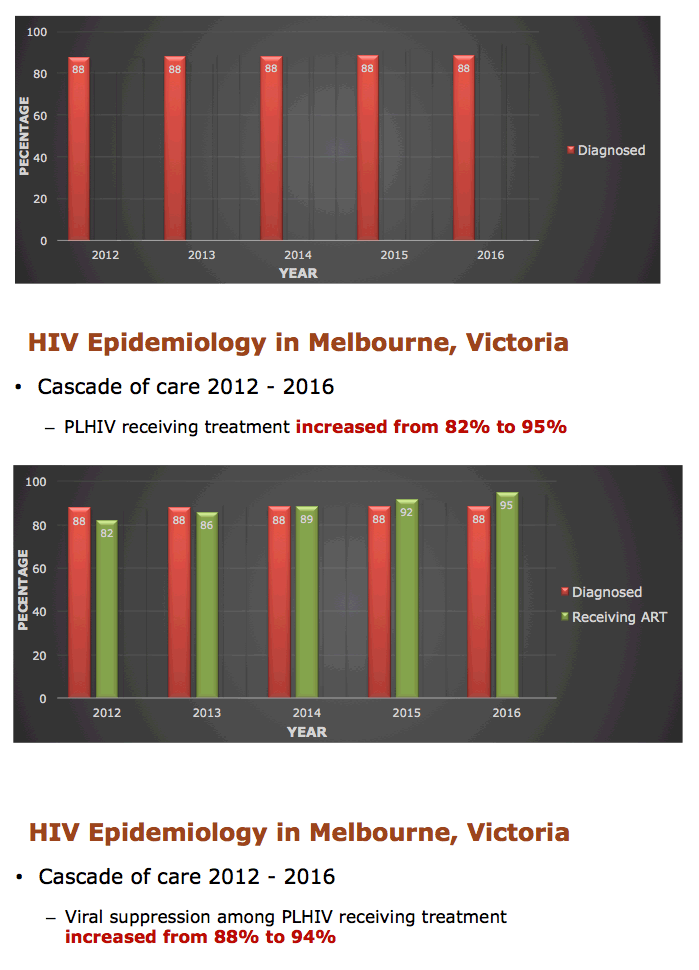
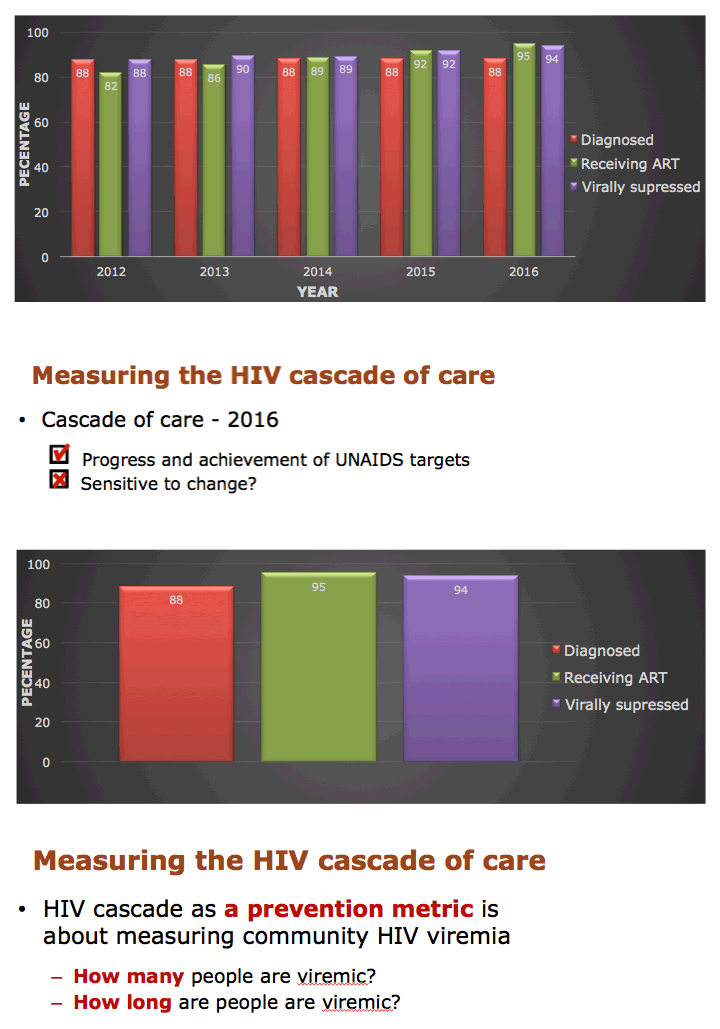
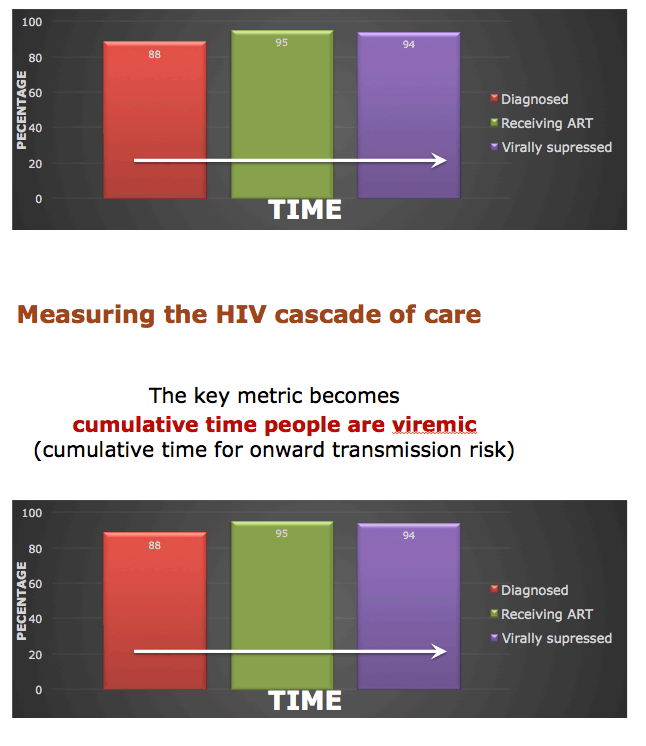
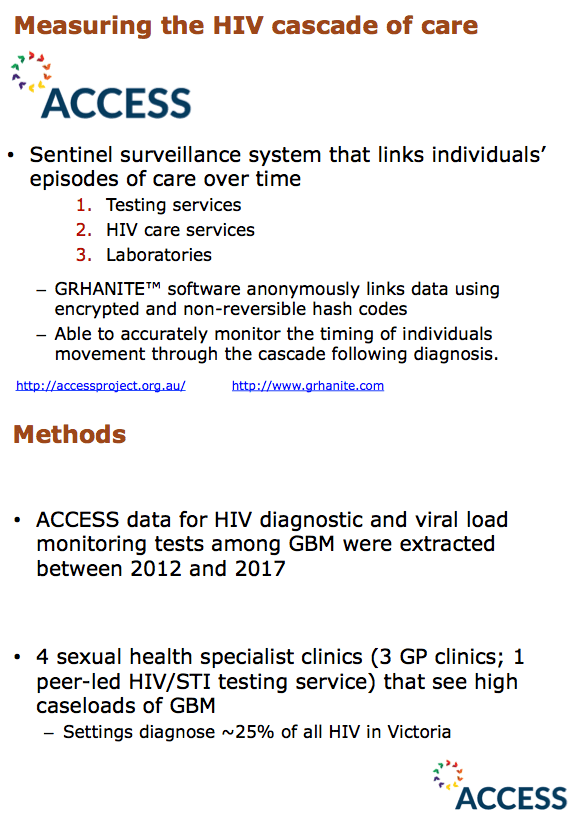
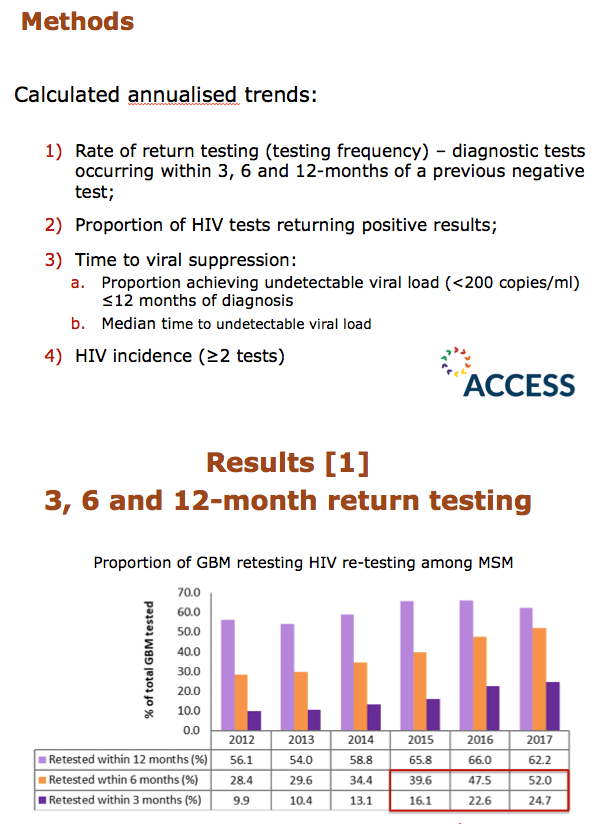
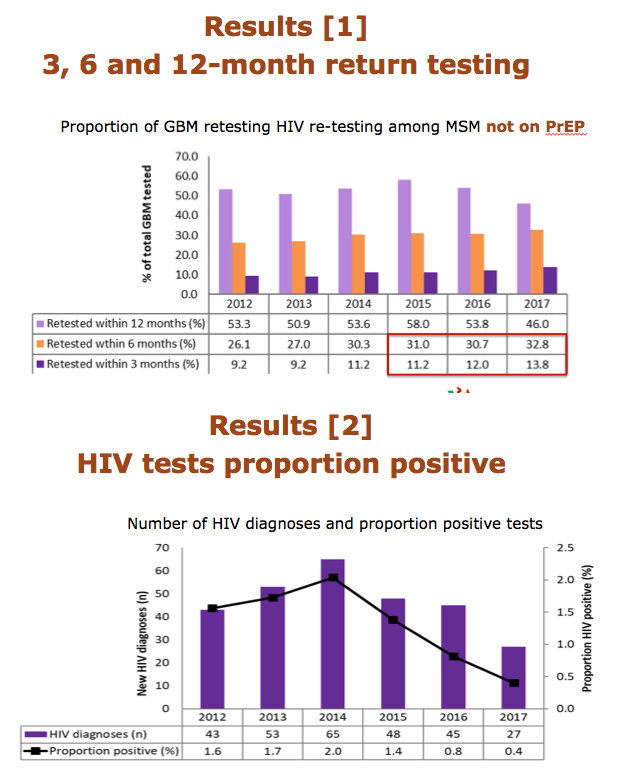
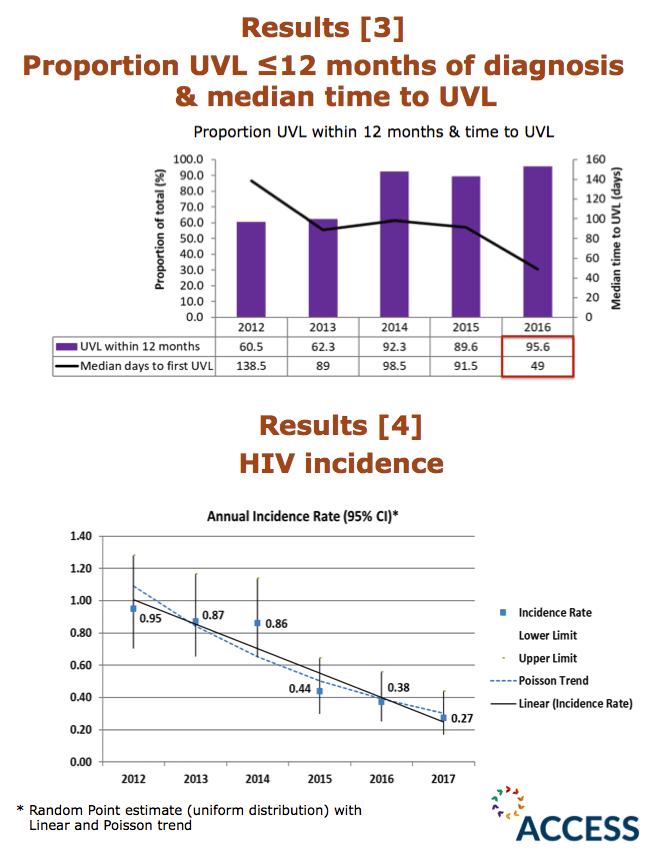
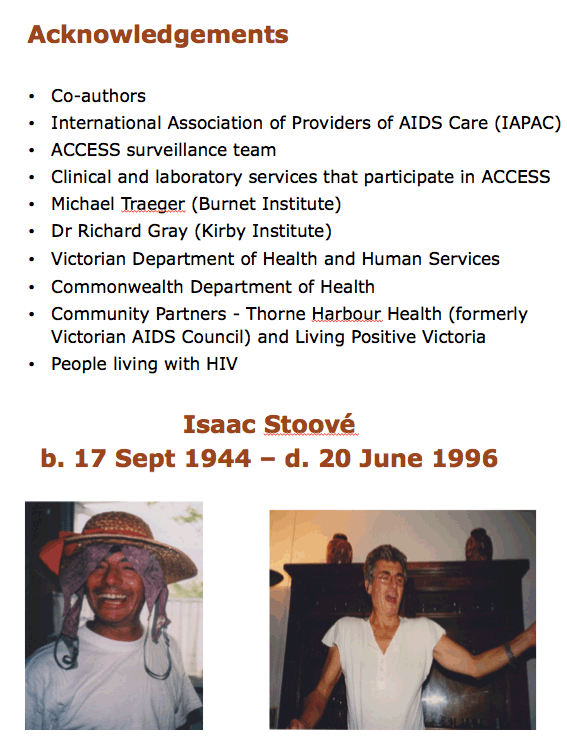
|
| |
|
 |
 |
|
|